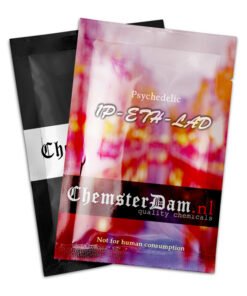2-Fluorodeschloroketamine
€10.15 – €254.00
Buy Clean and pure 2-Fluorodeschloroketamine [>90.0%] direct from our online shop
Shipping to USA, EU, NZ, AU *
*for research purposes only. human consumption is against our terms of service.
due to the lack of research regarding the substance, all discussion regarding the pharmacology of it is purely based on its structure and subjective effect similarities to other arylcyclohexylamine dissociatives such as dck and ketamine. with this in mind, 2-fluorodeschloroketamine is thought to act as an nmda receptor antagonist.
| bulk discount: | |
| 1 Gram | 10.15 |
| 3 Grams | 23.00 |
| 5 Grams | 31.50 |
| 10 Grams | 61.00 |
| 25 Grams | 139.50 |
| 50 Grams | 254.00 |
| property | value |
|---|---|
| Common names | 2-Fluoroketamine, Fluoroketamine, 2-FK, 2-FDCK |
| Substitutive name | 2-Fl-2′-Oxo-PCM |
| Systematic name | (R/S)-2-(2-fluorophenyl)-2-(methylamino)cyclohexanone |
2-fl-2′-oxo-pcm (also known as 2-fluorodeschloroketamine, 2-fdck, and inaccurately as 2-fluroketamine, fluoroketamine, and 2-fk) is a lesser-known novel dissociative substance of the arylcyclohexylamine class that produces dissociative, anesthetic, and hallucinogenic effects when administered. it is structurally related to arylcyclohexylamines like ketamine and deschloroketamine and is reported to produce similar effects.
like other dissociative substances, it is primarily sought by recreational users for its ability to induce a hallucinogenic “out of body” state referred to as “dissociative anesthesia” (although the extent to which this occurs is highly dose-dependent). it has recently become available through online research chemical vendors where it is being sold as a designer drug replacement for ketamine.
there is very little information on the pharmacology, metabolism or toxicity of 2-fluorodeschloroketamine. it has an extremely brief history of human use. it is strongly advised to use harm reduction practices if using this substance.
chemistry
2-fluorodeschloroketamine, or 2-(2-fluorophenyl)-2-methylamino-cyclohexanone, is classed as an arylcyclohexylamine drug. arylcyclohexylamines drugs are named for their structures which include a cyclohexane ring bound to an aromatic ring along with an amine group. 2-fdck contains a phenyl ring bonded to a cyclohexane ring substituted with a ketone group (cyclohexanone). an amino methyl chain (-n-ch3) is bound to the adjacent alpha carbon (r2) of the cyclohexanone ring. additionally, the phenyl ring is substituted at r2 with a fluorine group.
2-fluorodescholoroketamine is a chiral molecule and is often produced as a racemate. des- is a prefix used in chemistry to denote the absence of a functional group (in this case “chloro”) hence 2-fdck is named for containing a fluorine substitution at its phenyl ring rather than the chlorine which is found in ketamine.
pharmacology
due to the lack of research regarding the substance, all discussion regarding the pharmacology of it is purely based on its structure and subjective effect similarities to other arylcyclohexylamine dissociatives such as dck and ketamine. with this in mind, 2-fluorodeschloroketamine is thought to act as an nmda receptor antagonist.
nmda receptors allow for electrical signals to pass between neurons in the brain and spinal column; for the signals to pass, the receptor must be open. dissociatives close the nmda receptors by blocking them. this disconnection of neurons leads to loss of feeling, difficulty moving, and eventually this substance’s equivalent of the “k-hole.”
| Gram | 1 Gram, 3 Grams, 5 Grams, 10 Grams, 25 Grams, 50 Grams |
|---|










Reviews
There are no reviews yet.